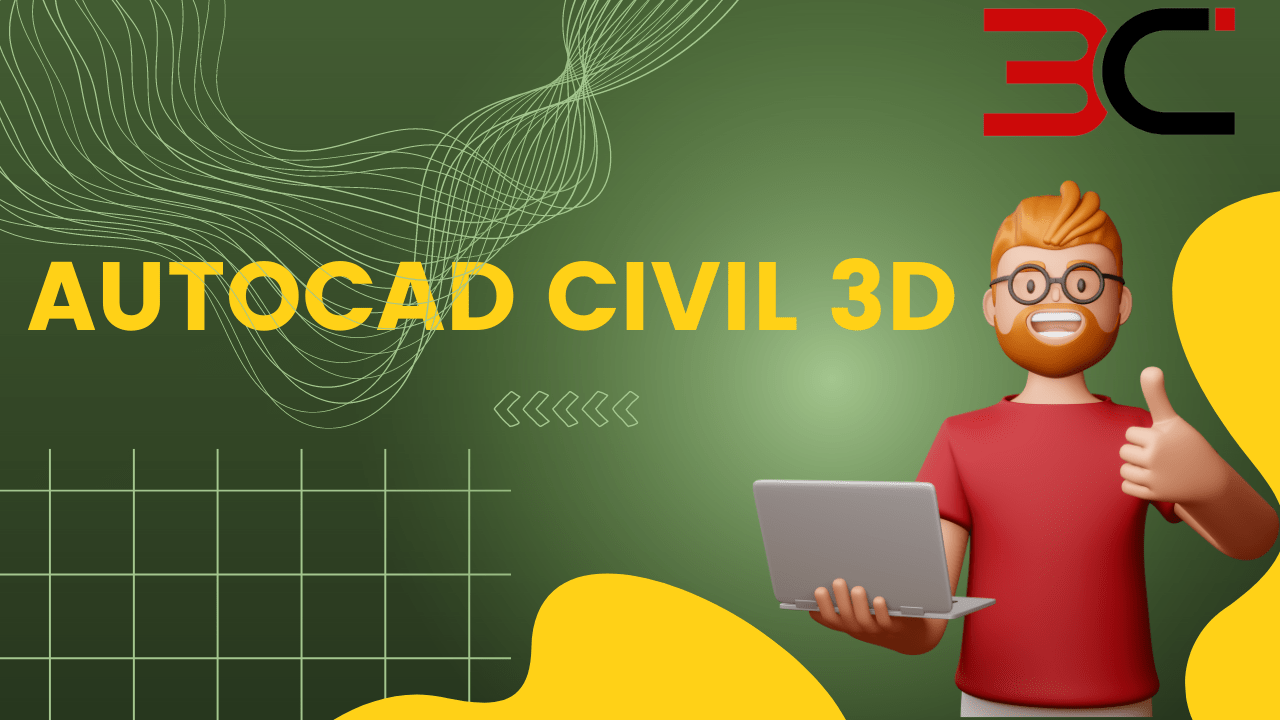The world is getting modern, and so are people of all ages. Nowadays, engineers work in an innovative way. They use various software and computers to design any road or any construction site. Road design using Civil 3D has become easier than ever.
Back in the day, civil engineers used to design with pencil and paper. But now, they have nice software to do that. Now, they are comfortable in road design with civil 3d. The software Civil 3d is well known as AutoCAD Civil 3D.
This article provides an overview of procedures for basic road design using AutoCAD Civil 3D. Anyone with an engineering mindset should know about Civil 3D.
The introduction starts with the basics and the typical methodology for creating road models. Following that, we will also explain the behaviors of various components and their functionalities.
Source: World Highways
Road Design in Civil 3D
There are two processes for road design using civil 3d. The general and the standard procedure.
The General Procedure
- Create a base map: If you look closely, the road design initiates the creation of the surface which is the current condition of the road. With that, it needs the compilation of the base map. The base map should be the existing conditions.
Don’t forget that, it includes information on the terrain. Not only that but also it parcels utilities and other potential influences in road design.
- Design placement: alignment establishes the major horizontal path that often reflects the roadway’s construction baseline. Alignments can be produced from survey data gathered in the field or using existing CAD entities such as lines, arcs, or polylines.
- Apply Layout Values: Set alignment layout goals and imposed borders. It affords specs for speed and height. Design values can be assigned at any second through the layout process, effectively no longer at the start of the alignment system. Alert notifications will help in the prompt provision of a compliant alignment.
- Create brand new floor profiles and layout grades: View state-of-the-art floor statistics for layout alignment and create finished grades. Finished grade profiles can be created graphically with profile identification tools, or they can be created using existing entity aesthetic form assessments or statistics from external files.
- Build components: Assemblies comprise the cross-sectional component of the design and are formed by linking separate sub-assembly objects, allowing the road’s shape and material makeup to be simulated and how it interacts with surrounding elements along the route to be defined.
The pre-configured libraries in the Civil 3D Tool Palette are used to choose the subassemblies. The Subassembly Composer may also be used to construct custom subassemblies.
- Create the corridors: Corridors are the dynamic 3D model representations created by combining horizontal, vertical, and Civil 3D cross-section creation features.
- Examine the created model: Corridors can be used to estimate earthworks and quantity takeoffs, perform sight and visual analysis, produce surfaces, and extract data for construction. Single corridor portions can be analyzed and changed to satisfy special or specialized design requirements.
- Enhance the design: When making a batter design, you need one or more adjusted corridor elements. For example, if you need to change the design profile to better balance, you should cut and fill volumes. Furthermore, because the road design is dynamic, modifications to one component influence the overall highway model.
The Standard Procedure
Below, we have shown the steps of the standard procedure for civil 3d road design.
- Import points.
- Construct an existing ground surface.
- Make the suggested alignment.
- Change the intended alignment.
- Include data bands and design the profile.
- Changes the suggested profile.
- Gather the planned assembly.
- Make a corridor.
- Create super elevation views.
- Change the profile.
- From the intended alignment, create completed ground surfaces
- Make a collection of example lines.
- Calculate materials.
- Make several section views.
Civil 3D Corridors
Corridors are dynamic 3D fashions of route-like elements including roads, trains, waterways, and bridges that incorporate surface, alignment, profile, and meeting information. Corridors are the number one layout object in civil 3D street modeling and simulation.
A corridor is formed by dragging an assembly along the horizontal and vertical routes indicated by the alignment and profile information together. Targets are set for daylighting to finish the corridor.
This build version can be used to create cross-segment sheets, earthwork and fabric volumes, function lines, and surfaces. Corridor-derived surfaces may form the very last grade, subgrade, or some form of underlying factor surface. These surfaces can be used for visualization, material quantities, and building.
Corridor Object Components
Source: (https://knowledge.autodesk.com/)
Here are the components of a Corridor Object
- Civil 3d Alignments
- Civil 3d Profiles
- Surfaces
- Assemblies
- Subassemblies
Alignments
Alignments specify the horizontal routes of elements such as channel ways, utility tunnels, roads, and bridges. Straight-line tangents and various curve and spiral types are used to represent their geometry.
When individual geometry is connected to form an alignment, design constraints based on rules can be applied.
Alignment Creating and Editing
Alignments can be made in several ways. They can be made from existing line, arc, and polyline entities or by using the Alignment Layout tools.
Creating Alignments Using Design Criteria
Design criteria can be implemented at the start of the alignment creation process or added later by using the Alignment Characteristics panel’s Design Criteria tab. When criteria and design checks are assigned from the beginning, the designer can benefit from real-time warnings when violations occur.
On top of that, additional design speeds can be added as needed in the Alignment Properties panel’s Design Criteria tab.
Profiles
Surface elevation along an alignment is defined by profiles. Tangents and vertical crest and sag curves are used to define design grade profiles.
Design criteria that specify three types of minimum K tables based on stopping sight distance, passing sight distance and headlight sight distance can be used to control profile geometry
Using Design Criteria Files on Profiles
The same techniques used for alignments are utilized to apply design criteria to profiles as 3D alignment, and profile are quite similar. Design criteria files are automatically applied to the profile by default if the parent alignment of the profile does so.
Superelevation
Superelevation is the financing of a curve to help offset the thrust force experienced by a vehicle while traveling through a curve.
When superelevation parameters are implemented to the alignment item, the resulting corridor model rotates and warps the cross-sectional connections and forms to reflect the elevation of one edge of the travel way over the other.
AutoCAD Civil 3D offers two ways for achieving super elevation:
- Standard: used to undivided, crowned highways as well as split roadways having crowned or planar parts.
- Planar: utilized on highways with a single, planar segment, such as ramps and service roads.
Superelevation Data Displaying and Editing
The Super Elevation Curve Manager displays and edits super elevation settings for specific curves. It may be accessed by either choosing the alignment in the drawing or via the Prospector tab.
For examination and adjustment, a grid view of all superelevation values for the full alignment may be utilized. By selecting View Tabular Editor from the alignment context menu, you may access the grid view.
Assemblies
The cross-sectional composition of the road design is represented by assemblies. Assemblies are groups of separate subassembly components that depict things like medians, lanes, curbs, walkways, and shoulders.
The assembly object serves as the foundation for the designer to snap any number of prepared subassembly parts from the Civil 3D Tool Palette together. Assemblies may provide the functionality necessary for the construction of complicated road networks, such as junctions, conditional daylighting, and superelevation.
Subassemblies
AutoCAD Civil 3D has a large library of subassemblies for a wide range of road design applications. Their use spans from basic marked points and generic linkages to very complex super elevated lane objects with the axis of rotation choices.
Custom subassemblies can be created using AutoCAD entities or the Subassembly Composer. Subassemblies are made up of points, linkages, and shapes. Input parameters govern their shape and behavior.
Uses of Point, Link, and Shape Codes in AutoCAD
Subassemblies are made up of points, linkages, and forms, each of which has its code that is used for a variety of purposes. This reliable corridor model data is used to generate surfaces that reflect completed grades, subgrades, and materials.
When constructing the corridor, the matching point codes from the subassemblies are connected from assembly to assembly, resulting in corridor feature lines. These feature lines are named by the point code from which they were formed.
The efficient use of point, link, and shape code styles across the project may substantially increase the efficiency of documenting and showing highway designs. Furthermore, within the drawing, link codes can be assigned a render material for viewing, and an area fills material for hatching.
The road design capabilities in AutoCAD Civil 3D software enable defining, annotating, and assessing your road design more efficiently, while also ensuring that your design adheres to solid engineering standards. Many repetitive and complex road design chores, such as labeling and updating cross-section sheets, connections, forms, codes, target parameters, and road models can be adjusted to your design needs.
Bottom Line
This article has provided an overview of road design tutorials from start to finish using Civil 3D. After reading this article, you should be able to start creating your dynamic, criteria-based highway designs, as well as road designs using Civil 3D which will help you and your firm achieve a competitive advantage.

